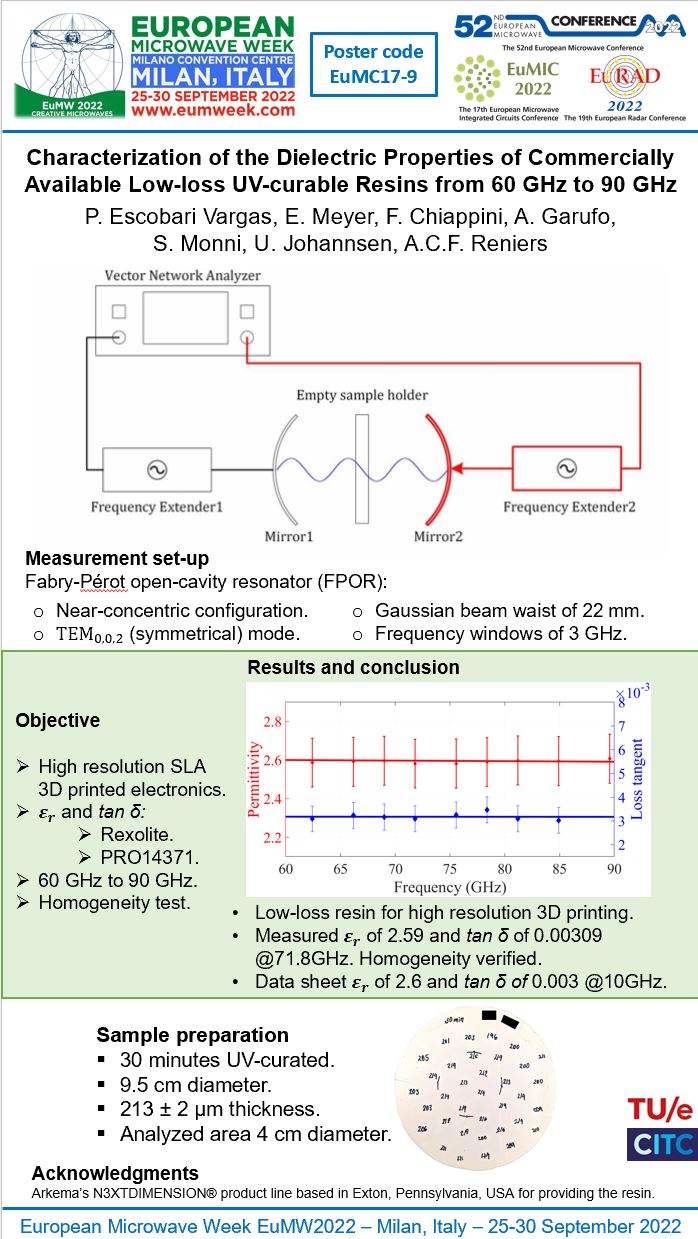Paper on the Characterization of the Dielectric Properties of Commercially Available Low-loss UV-curable Resins from 60 GHz to 90 GHz
October 26, 2022 – At the recently held European Microwave Week conference in Milan, our colleague Paola Escobari successfully presented her work on the characterization of the dielectric properties of commercially available low-loss UV-curable resins from 60 GHz to 90 GHz.
Two dielectric properties
 In her research, Paola determined two important dielectric properties, the relative permittivity and the loss tangent of a new commercially available UV-curable SLA resin sample. She performed the characterization of the dielectric material in the millimeter-wave range using an open-cavity Fabry-Perot resonator.
In her research, Paola determined two important dielectric properties, the relative permittivity and the loss tangent of a new commercially available UV-curable SLA resin sample. She performed the characterization of the dielectric material in the millimeter-wave range using an open-cavity Fabry-Perot resonator.
According to the manufacturer’s data sheet, the ultralow-loss photoresist material, optimized for advanced electronic applications, has a relative permittivity of 2.6 and a loss tangent of 0.003, both at 10 GHz.
First, Paola determined the accuracy of the Fabry-Perot open-cavity resonator using a reference material called Rexolite. Then, she measured the new dielectric material in a frequency band from 60 GHz to 90 GHz.
The results show that the new commercial resin sample has a relative permittivity of 2.59 and a loss tangent of 0.0031 at 71.8 GHz. This means that these materials for 3D printing are suitable for mmWave application and thus can be used in the development of e.g. antennas or packaging.
Interested in the complete results? Download paper
Innovation meets collaboration
Collaboration is vitally important in innovation. CITC has created an effective ecosystem in which companies, research and educational institutes work on bridging the gap between academics and industry.
Paola’s work is a perfect example of multi-party collaboration. She is an Engineering Doctorate student at Eindhoven University of Technology. Her work, however, is funded by and in collaboration with CITC.
In this particular project, she was supported by TNO Radar Technology department and TNO Holst Centre. The TNO branches not only manufactured the material samples used in this work, they also provided support and access to specialized equipment. In addition, the project was supported by Sartomer’s N3xtDimension product line and, finally, Antennex provided access to the Fabry-Perot resonator.
Photo credit to Elmine Meyer, Eindhoven University of Technology